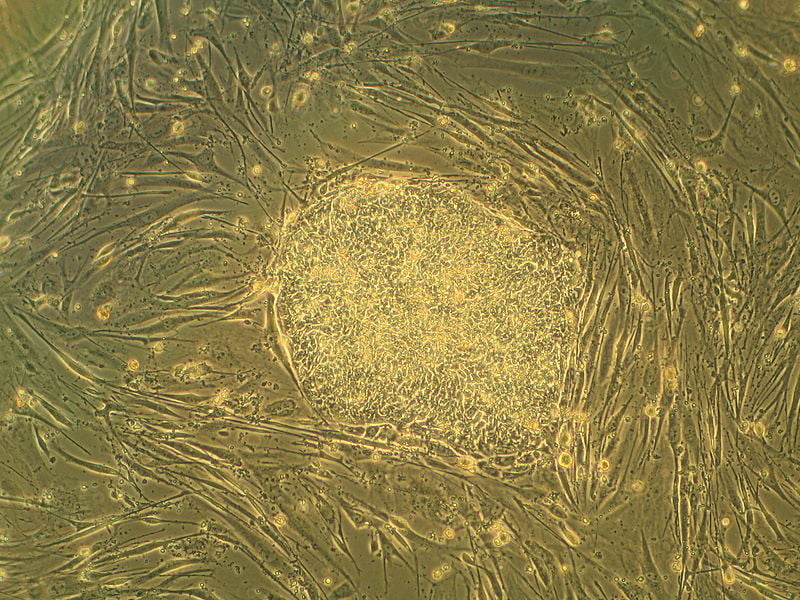New research at the Hebrew University of Jerusalem sheds light on the unique renewal abilities of embryonic stem cells. The researchers hope to apply what they’ve discovered to curing degenerative diseases like Alzheimer’s, Parkinson’s, and diabetes.
Embryonic stem cells, which form the beginning of an embryo, have the potential to indefinitely renew themselves, and to differentiate into all types of mature cells – an ability called pluripotency. Taking advantage of and controlling pluripotency has been a major challenge in modern biology.
Related Stories:
- Israeli Scientists Find Way To Control Cell Death
- Researchers Find Cluster Of Genes That Predict Parkinson’s
The new discoveries could expedite the use of embryonic stem cells in cell therapy and regenerative medicine. The hope is for scientists to be able to replicate the mechanisms that make pluripotency possible. This way they could, under lab conditions, create cells that could then be implanted in humans to cure diseases characterized by cell death.
Chromatin holds the key
The pluripotency of stem cells is reduced over time as the genetic functions of cells change, for example a stem cell begins acting like a skin cell. This process, in which changes in genetic functions are not accompanied by changes in the DNA sequence, is called an epigenetic pathway. The researchers are now focusing on stem cell-unique epigenetic mechanisms and in particular on their molecular basis: chromatin.
Chromatin is composed of a cell’s DNA and structural and regulatory proteins. Shai Melcer, a PhD student who was part of the research team, found that chromatin is less condensed in embryonic stem cells, allowing them the flexibility or ”functional plasticity” to turn into any kind of cell. The researchers believe that chromatin plasticity is tantamount to functional plasticity since chromatin is made up of DNA that includes all genes and codes for all proteins in any living cell.
Focus was also put on nuclear lamina protein, a part of the cell nucleus that provides mechanical support for the cell. The study found that lamin A, which plays a role in binding chromatin, is absent from embryonic stem cells. This may be what enables the freer, more dynamic chromatin state in the cell nucleus.
Sign up for our free weekly newsletter
SubscribeManipulations of embryonic stem cells
Understanding the mechanisms that regulate chromatin function will enable intelligent manipulations of embryonic stem cells in the future.
The researchers are working out of the lab of Dr. Eran Meshorer, in the Department of Genetics at the Hebrew University’s Alexander Silberman Institute of Life Sciences. Dr. Meshorer says that ”If we can apply this new understanding about the mechanisms that give embryonic stem cells their plasticity, then we can increase or decrease the dynamics of the proteins that bind DNA and thereby increase or decrease the cells’ differentiation potential.”
The research was funded by grants from the European Union (ERC, Marie Curie), Israel Science Foundation, Ministry of Science, Ministry of Health, The National Institute for Psychobiology, Israel Cancer Research Foundation (ICRF), Abisch-Frenkel Foundation and Human Frontiers Science Program (HFSP).
The research appears in the journal Nature Communications as Melcer et al., Histone modifications and lamin A regulate chromatin protein dynamics in early embryonic stem cell differentiation.
Photo by Ryddragyn
Related posts

Israeli Medical Technologies That Could Change The World

Harnessing Our Own Bodies For Side Effect-Free Weight Loss

Missing Protein Could Unlock Treatment For Aggressive Lung Cancer




Facebook comments